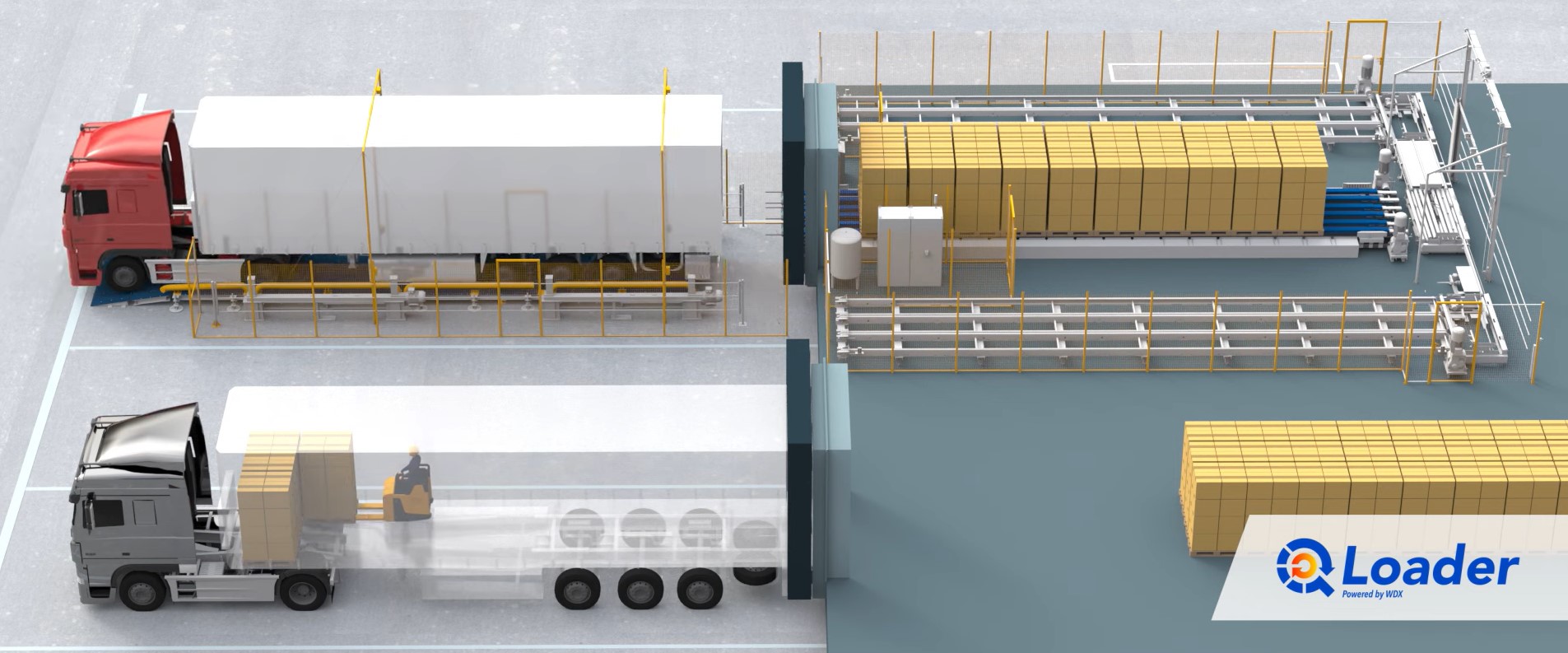
Mexico Intralogistics Market by Component (Hardware, Software, and Services), and by End User Industry (Logistics, Food & Beverages, Retail & E-commerce, Automotive, Chemicals, Pharmaceuticals, Airport, and Mining) – Opportunity Analysis and Industry Forecast 2023–2030
Industry: Construction & Manufacturing | Publish Date: 05-Dec-2023 | No of Pages: 74 | No. of Tables: 50 | No. of Figures: 21 | Format: PDF | Report Code : N/A
Market Definition
Mexico Intralogistics Market was valued at USD 1.10 billion in 2022, and is predicted to reach USD 3.72 billion by 2030, with a CAGR of 16.4% from 2023 to 2030. Intralogistics is a vital aspect of supply chain management, and its market is focused on the design, implementation, and maintenance of internal logistics systems. In order to maximise the flow of materials and effectively and economically meet the company's demands, it entails the movement, storage, and management of commodities within an organisation, such as a factory, warehouse, or distribution centre.
The intralogistics market involves the design, implementation, and maintenance of factory and warehouse systems and includes various industries such as manufacturing, retail, e-commerce, and healthcare. Material handling, inventory control, order fulfilment, and reverse logistics are some of the most frequent applications of intralogistics. The intralogistics industry is expanding as a result of rising need for quick and effective delivery, rising demand for automation, and rising demand for sustainable and environmentally friendly solutions.
Mexico's Strategic Legislation Fuels Intralogistics Sector Growth with Economic Zones and Incentives
The Mexican government has undertaken a proactive approach to propel the development of the intralogistics sector by implementing targeted legislation. Notably, the establishment of economic zones stands out as a key strategy, offering businesses enticing incentives such as tax discounts to encourage investment in the sector.
This deliberate effort is instrumental in fostering a conducive environment for businesses to thrive, leading to an overall boost in the intralogistics market. The alignment of government initiatives with economic incentives has created a synergistic effect, propelling both the growth of the intralogistics market and the economic vitality of the region.
Thriving Horizons: Mexico's Intralogistics Market Surges Amid Economic Growth and Industrial Resurgence
The intralogistics market in Mexico is experiencing a sustained period of growth propelled by multiple factors. The steady expansion of Mexico's economy, marked by increased manufacturing and industrial activities, has emerged as a primary driver. This economic upswing has prompted businesses to seek more efficient methods for managing their supply chains and warehouse operations.
In response to this demand, the intralogistics sector is thriving, as companies explore and adopt advanced solutions to enhance the effectiveness of their logistics processes. The symbiotic relationship between economic growth and the pursuit of operational efficiency is playing a pivotal role in propelling the ongoing expansion of Mexico's intralogistics market.
High Installation Cost of Intralogistics Systems Can Gloom the Market Prospects
The high installation cost of intralogistics systems can be a significant barrier to adoption and can limit the market prospects for these systems. Intralogistics systems typically require significant investments in technology and infrastructure, including specialized equipment, software, and hardware, as well as the cost of installation and maintenance.
Some organisations, especially small and medium-sized enterprises (SMEs), which may have limited resources to invest in these technologies, may find this high upfront cost to be prohibitive. The scale and complexity of the operation, the level of customization needed, and the level of automation requested can all have an impact on how much intralogistics systems cost. As a result, some businesses may opt for less expensive and less efficient alternatives, which can limit the growth and adoption of intralogistics systems in the market.
Unlocking Opportunities: Introduction of Drones in Intralogistics Industry to Create Future Market Prospects
The introduction of drones in intralogistics has the potential to create significant growth opportunities for businesses that rely on efficient supply chain operations. Drones, also known as unmanned aerial vehicles (UAVs), are being used in intralogistics to automate a range of tasks, including inventory management, order picking, and delivery.
Businesses may increase the accuracy and speed of their operations while cutting the time and expense of manual labour and transportation by utilising drone technology. Drones can also increase the flexibility and scalability of intralogistics, allowing businesses to quickly adjust to fluctuations in demand.
Moreover, drones can improve efficiency and reduce the risk of accidents or injuries for workers who might otherwise need to use ladders or other equipment to access these areas. In addition, drones can gather information on inventory levels, product quality, and other key metrics, providing businesses with valuable insights into their operations by using sensors and cameras. This data can be used to optimize processes, improve forecasting, and reduce waste, leading to cost savings and improved efficiency. All these above-mentioned factors are expected to create growth opportunities for the intralogistics market in the near future.
Competitive Landscape
The Mexico intralogistics industry includes several market players such as Daifuku Co. Ltd., Jungheinrich AG, Kion Group AG, Honeywell International Inc., Midea Group, Vanderlande Industries B.V., SSI Schaefer AG, KNAPP AG, Beumer Group Gmbh and Co. KG, and Autostore.
Key Benefits
-
The Mexico intralogistics market report provides a quantitative analysis of the current market and estimations through 2023-2030 that assists in identifying the prevailing market opportunities to capitalize on.
-
The study comprises a deep dive analysis of the market trend including the current and future trends for depicting the prevalent investment pockets in the market.
-
The information related to key drivers, restraints, and opportunities and their impact on the market is provided in the report.
-
The competitive analysis of the market players along with their market share in the Mexico intralogistics market.
-
The SWOT analysis and Porter’s Five Forces model are elaborated in the study.
-
Value chain analysis in the market study provides a clear picture of the stakeholders’ roles.
Mexico Intralogistics Market Key Segments
By Component
-
Hardware
-
Automated Storage and Retrieval Systems (AS/RS)
-
Unit-Load AS/RS
-
Mini-Load AS/RS
-
Vertical Lift Modules (VLMs)
-
Carousel AS/RS
-
-
Industrial Robots
-
Mobile Robots
-
Automated Guided Vehicles (AGV)
-
Autonomous Mobile Robots (AMR)
-
-
Conveyor Systems
-
Sortation Systems
-
-
Software
-
Services
By End User Industry
-
Logistics
-
Food and Beverages
-
Retail and E-Commerce
-
Automotive
-
Chemicals
-
Pharmaceuticals
-
Airport
-
Mining
REPORT SCOPE AND SEGMENTATION:
|
Parameters |
Details |
|
Market Size in 2022 |
USD 1.10 Billion |
|
Revenue Forecast in 2030 |
USD 3.72 Billion |
|
Growth Rate |
CAGR of 16.4% from 2023 to 2030 |
|
Analysis Period |
2022–2030 |
|
Base Year Considered |
2022 |
|
Forecast Period |
2023–2030 |
|
Market Size Estimation |
Billion (USD) |
|
Growth Factors |
Increased manufacturing and industrial activities Growing government initiatives. |
|
Companies Profiled |
10 |
|
Market Share |
Available for 10 companies |
|
Customization Scope |
Free customization (equivalent up to 80 working hours of analysts) after purchase. Addition or alteration to country, regional, and segment scope. |
|
Pricing and Purchase Options |
Avail customized purchase options to meet your exact research needs. |
KEY PLAYERS
-
Daifuku Co. Ltd.
-
Jungheinrich AG
-
Kion Group AG
-
Honeywell International Inc.
-
Midea Group
-
Vanderlande Industries B.V.
-
SSI Schaefer AG
-
KNAPP AG
-
Beumer Group Gmbh and Co. KG
-
Autostore




 Speak to Our Analyst
Speak to Our Analyst


































